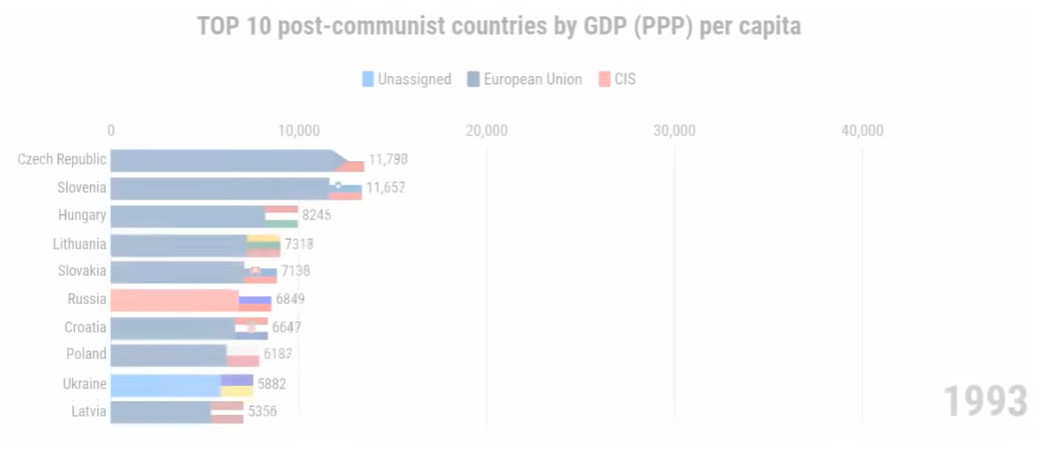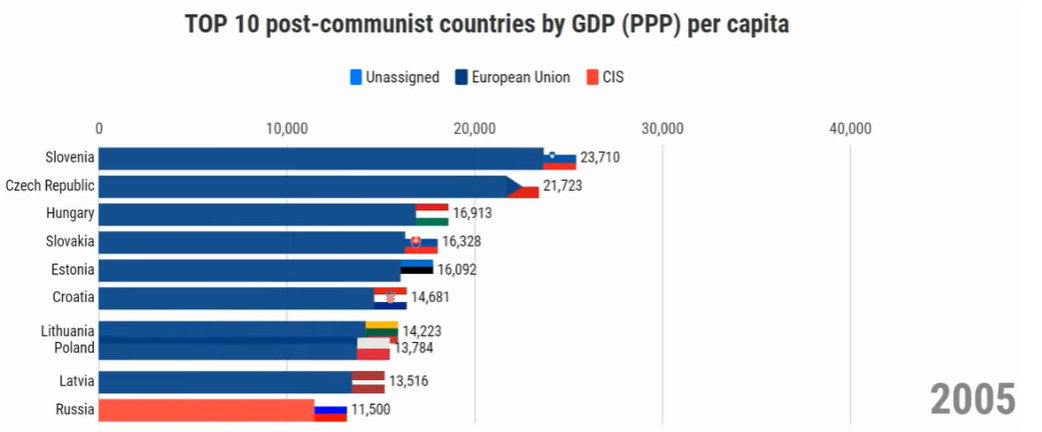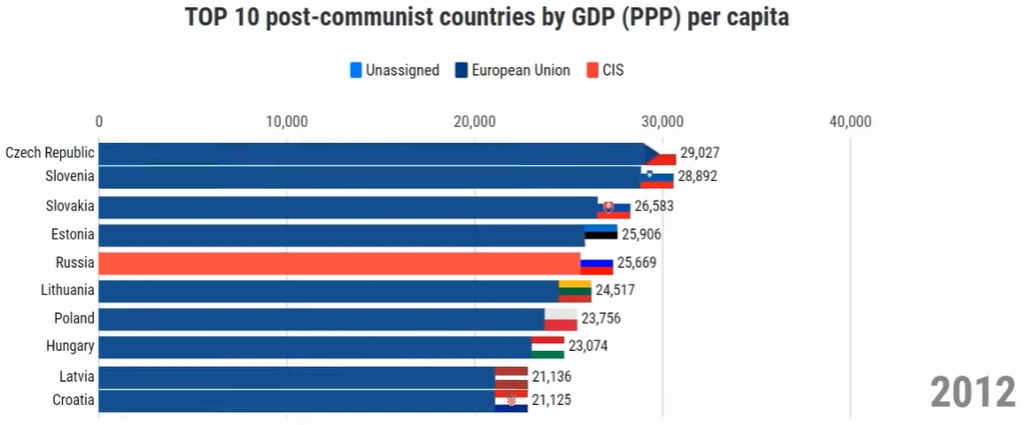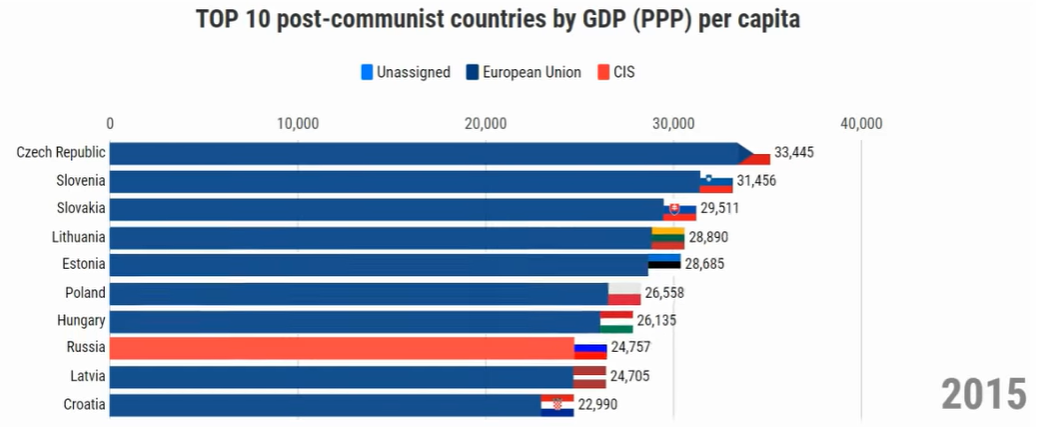Croatian Economy Expected to Grow by 3% in 2019
ZAGREB, December 16, 2019 - Croatia's economy is expected to grow by 3% in 2019 and slow down to 2.8% in 2020, while favourable labour market trends are expected to continue, the Croatian National Bank (HNB) said on Monday.
Inflation is projected at 0.8% in 2019, due to a reduction of VAT on certain products and a fall in oil prices, while in 2020 it is expected to pick up to 1.4% as a result of increased food prices and higher excise taxes.
The HNB forecasts a higher current account and capital account surplus than last year, thanks to increased exports, stronger absorption of EU funds and a rise in revenues from remittances, while next year a lower surplus is expected.
Foreign debt indicators should continue to improve in 2020.
In such a macroeconomic environment the HNB intends to continue an expansionary monetary policy, supporting the high liquidity of the monetary system, while at the same time keeping the nominal kuna-euro exchange rate stable.
After running a surplus in 2018, the general government budget is expected to show a deficit of 0.1% of GDP in 2019 and a surplus of 0.2% in 2020. General government debt is likely to continue to shrink in accordance with fiscal rules, the HNB said.
More economic news can be found in the Business section.
Croatia Second to Last in Consumption, GDP per Capita in EU
ZAGREB, December 13, 2019 - In 2018, Croatia was second to last among the EU member states in actual individual consumption and GDP per capita, Bulgaria being last, Eurostat and Croatia's national statistical office said on Friday.
Actual individual consumption per capita expressed in purchasing power standards was 36% below the EU average in Croatia last year, as against 38% below in 2017.
Last year Croatia and Hungary were second to last in the EU28. Bulgaria's actual individual consumption per capita was 44% below the EU average. Latvia was another country whose actual individual consumption was over 30% below the EU average.
In the 2016-18 period, the biggest improvement in actual individual consumption per capita was recorded in Romania, from 35% below the EU average in 2016 to 29% in 2018. The biggest decrease was recorded in Sweden, from 12% above the EU average in 2016 to 8% in 2018.
Another Eurostat estimate shows that in 2018, as in 2017, only ten member states recorded actual individual consumption per capita above the EU average.
The highest level was recorded in Luxembourg, 34% above the EU average, ahead of Germany (20% above). They were followed by Austria, Denmark, Belgium, the Netherlands, the United Kingdom, Finland, Sweden and France with levels of 7% to 17% above the EU average.
Italy had the closest actual individual consumption per capita to the EU average at 2% below. In Ireland, Cyprus and Spain, the levels were 10% or less below the EU average, while Lithuania, Portugal, Czechia and Malta were between 10% and 20% below. Slovenia, Greece, Poland, Estonia, Slovakia and Romania were between 20% and 30% below the average.
In 2018, 11 member states recorded GDP per capita above the EU average. Luxembourg's was 2.5 times above, followed by Ireland with almost twice the average. In Sweden, Germany, Austria, Denmark and the Netherlands, GDP per capita was between 20% and 29% above the average, in Finland and Belgium it was between 11% and 17% above, and France was 4% above.
In 2018, Malta was the closest to the EU average in GDP per capita at 2% below. Italy, Spain and Czechia recorded levels up to 10% below the average, Cyprus, Lithuania, Slovenia and Estonia were between 10% and 20% below, while Poland, Hungary and Slovakia were up to 30% below.
Croatia, Latvia, Romania and Greece had GDP per capita levels at more than 30% below the EU average. In Croatia, it was 39% below in 2017 and 37% below in 2018. Bulgaria's level was 49% below in 2018.
More news about Croatia and the EU can be found in the politics section.
Economy Heading in Right Direction, Calls for Stepping up Pace
ZAGREB, December 11, 2019 - Croatian Chamber of Commerce (HGK) president Luka Burilović said on Wednesday that the national economy was heading in the right direction but called for stepping up the pace.
"We can be moderately satisfied with the outgoing year. All important macroeconomic indicators are positive. We have yet another record tourist year and our consumption and investments have been growing. That growth is still not at the rates we want it to be at but is enough to make us optimistic about next year. We are heading in the right direction but we must step up the pace - that is the message that we have been sending the government all the time," Burilović said at a session of the HGK Assembly.
Speaking of challenges, he said one of the biggest was a labour shortage.
If the education system does not follow market needs, we will have big problems, he said.
The Digital Chamber project, which is in its final stage and is expected to be completed by the end of March next year, was presented at the HGK Assembly session.
The project is an information-communication platform for e-services intended for HGK members, public administration and citizens.
The digital chamber will make information on possible financing sources more available to enterprises, enable them to better present their products and services and involve them more actively in creating the business climate.
The total value of the project is 28.7 million kuna, of which 85% comes from EU funds and 15% has been provided by the HGK.
More economy news can be found in the Business section.
Top 10 Post-Communist Countries by GDP Year by Year (1992-2017)
December 10, 2019 - How have the economies of Eastern and Central Europe been growing since the collapse of Communism? An interesting GDP per capita comparison year by year from 1992 to 2017.
The fall of the Berlin wall and all that followed brought immense change to Eastern and Central Europe, with some countries adapting better than others, some affected by war, others embracing the digital age. A very interesting video timeline of how those economies have fared from 1992 to 2007 was covered by Index today in this great video below.
Another way to look at the data, in much slower time, is year by year, chart by chart, to see how Croatia has fared with neighbouring countries in terms of GDP per capita from 1992 to 2017. No need for words or commentary from me - information about the data from Lionwork Statistics is at the bottom of the article.
About the data (from Lionwork Statistics YouTube post):
Which post-communist economy performed the best during the last 25 years? What statistical data tells us about the journey of these young democracies. Let's see and discuss.
CAUTION:
1. There were no data available for Slovenia, Croatia, Latvia, Lithuania, and Estonia until 1995. In these cases, the average growth rate of the nearest region was used to calculate the estimated value. In the case of Estonia, data are shown from 1993, since no similar region is present due to geographical placement.
2. The comparison includes Albania, North Macedonia, Montenegro, Serbia, Bosnia and Herzegovina Slovenia, Lithuania, Latvia, Estonia, Hungary, Slovakia, Czech Republic, Poland, Croatia, Bulgaria, Romania, Moldova, Belarus, Russia, and Ukraine. Some never made it to the Top 10 during the time period.
3. GDP (PPP) is a measure which consists of crude income compared to prices of goods in countries or regions. Value widely represents the economic position of individuals and is usually considered as a pretty accurate statistic. Numbers may vary from one source to another based on a methodical approach to the collection of data.
4. Numbers present are the average of all individuals including children, students, unemployed and retired expressed in international USD value to date (19.04.2019).
Croatia's Exports Increase by 5%, Imports by 5.3%
ZAGREB, December 9, 2019 - Croatia's commodity exports reached 94.1 billion kuna in the first ten months of 2019, an increase of 5% over the same period in 2018, while imports increased by 5.3% to 155.4 billion kuna, initial data from the National Bureau of Statistics (DZS) showed on Monday.
The foreign trade deficit in the first ten months of this year was 61.3 billion kuna, or 3.33 billion kuna higher than at the same time last year. Coverage of imports by exports was 60.5%, down from 60.7% in the first ten months of 2018.
Export to EU member states rose by 4% to 64 billion kuna and exports to non-EU countries went up by 7.2% to 30 billion kuna.
Imports from EU members increased by 9% to 125 billion kuna, while imports from non-EU countries fell by 7.5% to 30 billion kuna.
Viewed in euro, exports reached 12.7 billion euro, up 5.2%, and imports rose by 5.5% to 21 billion euro. The trade deficit was 8.3 billion euro, compared to 7.8 billion euro in the first ten months of 2018.
Exports to EU member states amounted to 8.64 billion euro, an increase of 4.2%, and exports to non-EU countries rose by 7.3% to 4.05 billion euro.
Imports from EU member state increased by 9.2% to 16.9 billion euro, while imports from non-EU countries dropped by 7.4% to 4.11 billion euro.
More economy news can be found in the Business section.
Negative Interest Rates Not Realistic for Croatia
ZAGREB, December 8, 2019 - Negative interest rates are appearing in some European money and sovereign bond markets but not on Croatian bonds, the Croatian Banking Association (HUB) says in its latest analysis, noting that the necessary prerequisites must be created for negative interest on loans and that in Croatia's case, this is not realistic for now.
The HUB cites Eurostat data on ten-year sovereign bond yields in local currencies. The governments with negative yields in September were Denmark (-0.59%), Germany (-0.59%), Ireland (-0.01%), France (-0.28%), Latvia (-0.11%), Luxembourg (-0.50%), the Netherlands (-0.43%), Austria (-0.30%), Slovenia (-0.16%), Slovakia (-0.34%), Finland (-0.30%) and Sweden (-0.23%).
Negative interest rates are an obvious reality, but it must be noted that the prerequisite for them is that the country should be a member of the euro area or very closely tied to it and developed, like Denmark and Sweden, HUB says in its "Are negative interest rates a reality?" review.
Croatia's ten-year sovereign bond yield was 0.49%. For now, it is far from the minus zone, HUB says.
However, HUB notes, when interest rates on long term sovereign bonds end up in the negative zone, it is very likely that interest rates on loans will stay positive because of the deposit-to-loan conversion costs.
Average interest rates on long term corporate loans in Sweden (1.22%) and Belgium (1.43%) are the lowest in the EU. Interest on housing loans in September was lowest in Slovakia (1.04%) and Germany (1.24%).
Although Croatia has not introduced the euro yet and is not a developed EU member state, average interest rates on corporate and housing loans are within the euro area's interval, as if it had introduced the euro, HUB says.
For the first time, the average interest on housing loans in Croatia dropped below 3% (2.8%).
More economy news can be found in the Business section.
Croatians Expected to Spend 15.3 Billion Kuna over Coming Holidays
ZAGREB, November 30, 2019 - Croatian citizens are expected to spend 15.3 billion kuna over the coming holidays, 500 million kuna more than a year ago, the Croatian Chamber of Commerce (HGK) said on Saturday.
The estimate refers to the period from December 1 to January 1. Retail is the main driver of the holiday consumption and it is estimated that it will generate about 14 billion kuna, Tomislava Ravlić of the HGK told a press conference.
The 15.3 billion kuna spending estimate is based on the tax reform and wage growth, another good tourist season, higher consumer optimism and record-high employment, she said.
For the past ten years, December has been the period of highest spending in a year, Ravlić said, adding that 8-10 billion kuna was spent during the "classic" months and up to 14 billion kuna during July and August in record tourist seasons.
The highest spending in December is recorded in the week before Christmas, she said.
Retail has been stable for the past five years and turnover has been recording growths since August 2014, with the exception of four months of decline and one of being stable, Ravlić said, adding that in the first nine months of this year trade was 3.7% higher than at the same time in 2018.
She also underscored changes in consumer habits. Previously, the majority of citizens worried about the cost of living, whereas now the majority (29%) prioritise health, 21% the cost of living and 20% the work-life balance.
"This tells us that the economy has stabilised and that consumer optimism has increased and that, despite problems, our citizens live better, i.e. that the standard is better," Ravlić said.
She also mentioned that in Europe 50% of the people who use the Internet also shop online, as against 27% in Croatia.
More economy news can be found in the Business section.
Economic Sentiment in Croatia Improves Mildly in November
ZAGREB, November 28, 2019 - Economic sentiment in Croatia improved mildly in November owing to optimism in industry and retail, and optimism improved mildly also in the EU and the euro area, shows a report released by the European Commission on Thursday.
The Economic Sentiment Indicator (ESI) rose in November by 0.8 points compared to the previous month to 114.1 points. In October it dropped by 1.4 points.
Business expectations improved the most in November in industry, with ESI going up by 3.9 points. The retail sector followed, with ESI growing by 3.3 points.
Consumer confidence remained at the same level as in October.
Construction confidence was almost halved in relation to October, when it reached its highest level since the EC started monitoring indicators for Croatia. In November construction confidence dropped by 11.1 points.
Services confidence worsened mildly, going down by 0.5 points.
At EU level, the ESI increased by 0.9 points, reaching a long-term average of 100 points. This put an end to negative trends that started in June, says the latest report, noting that the ESI for October was revised up by 0.1 points due to a revision of the ESI for France.
Confidence improved the most in retail and services, as evidenced by indicator increases of 2 and 1.2 points respectively.
More economy news can be found in the Business section.
Croatia's GDP Growth Accelerates to 2.9% in Q3
ZAGREB, November 27, 2019 - In the third quarter of 2019, the Croatian economy grew by 2.9% on the year, a somewhat faster growth compared to the second quarter when GDP increased by 2.4%. The Croatian Bureau of Statistics (DZS) on Wednesday released its initial estimate according to which Gross Domestic Product (GDP) in the third quarter increased by 2.9% on the year.
That is the 21st quarter in a row that Croatia's GDP has grown.
The biggest positive contribution to GDP in Q3 came from a growth in the export of commodities and services, and household consumption, DZS reported.
Household consumption increased 3.3% in Q3 year-on-year and 2.7% compared to the second quarter.
The export of commodities and services increased by 4.7% in Q3, Y-o-Y and by 3.3% Q-o-Q. The export of commodities jumped by 7.1% while services exports increased 3.1%.
The import of commodities and services also increased on the year (+1.1%), significantly slower than in the preceding quarter when it jumped by 8.3%. The import of commodities increased by 0.9% while imported services increased by 1.8%.
The growth of gross investments in fixed capital increased by 5% in Q3 on the year, which was slower than in Q2 when it increased by 8.2%.
Government consumption also increased in Q3 (+2.9%) compared to the same quarter last year, which is a slower growth than in the second quarter (+3.9%).
In Q3 2019, according to seasonally adjusted data, Croatia's GDP grew by 0.8% from Q2 and 2.8% from Q3 2018.
That is a higher growth than the EU average. Recently, the Eurostat statistical office reported that the EU economy grew by 1.3% in Q3 on the year and 0.3% on the quarter.
More news about GDP growth can be found in the Business section.
Work Permits Quota for Foreigners Set at 78,470 in 2020
ZAGREB, November 22, 2019 - The Croatian government on Friday decided that during 2020 it would be possible to issue 78,470 work permits for foreigners in 2020.
The quota includes new employment of foreigners, seasonal employment, transfer of workers within a company and employment for strategical investment projects.
The new employment quota stands at 64,604 permits.
Broken down by sectors, construction can hire 33,300 foreigners, tourism and hospitality service can count on 18,370 permits, the transport sector 2,904, metal industry 2,300, food industry 1,410, agriculture and forestry 1,380 and so on.
Some 12,770 permits are expected for seasonal workers with 12,000 intended for tourism and hospitality and 770 in agriculture and farming.
A quota of 96 permits a year are expected for redistribution of employees within companies and 1,000 for the implementation of strategic investments projects.
Today's government decision enables an increase and redistribution of quotas in tourism and hospitality as well as in the construction sector by a maximum 5,000 permits depending on needs and the developments on the labour market.
The annual quota to extend already issued permits amounts to 25,000.
More economy news can be found in the Business section.




























